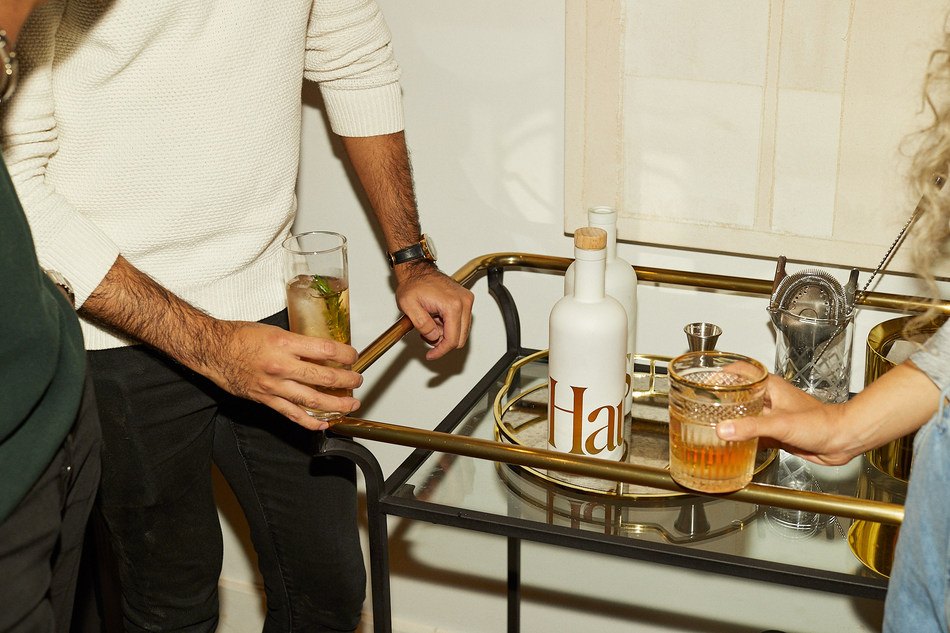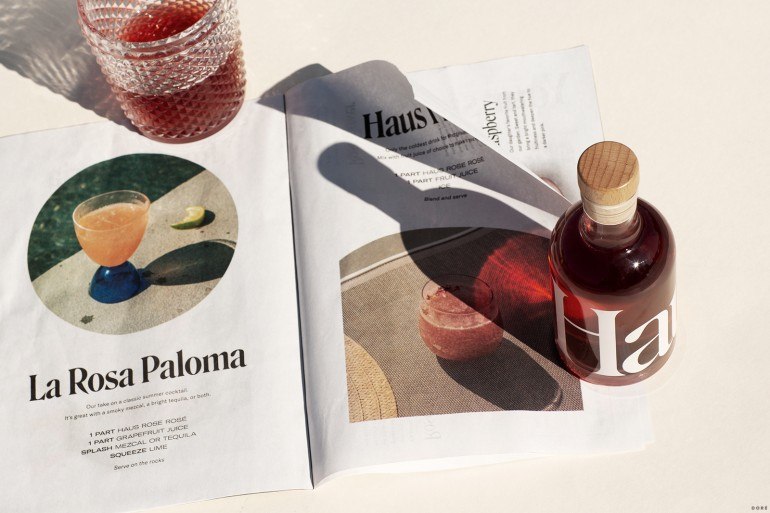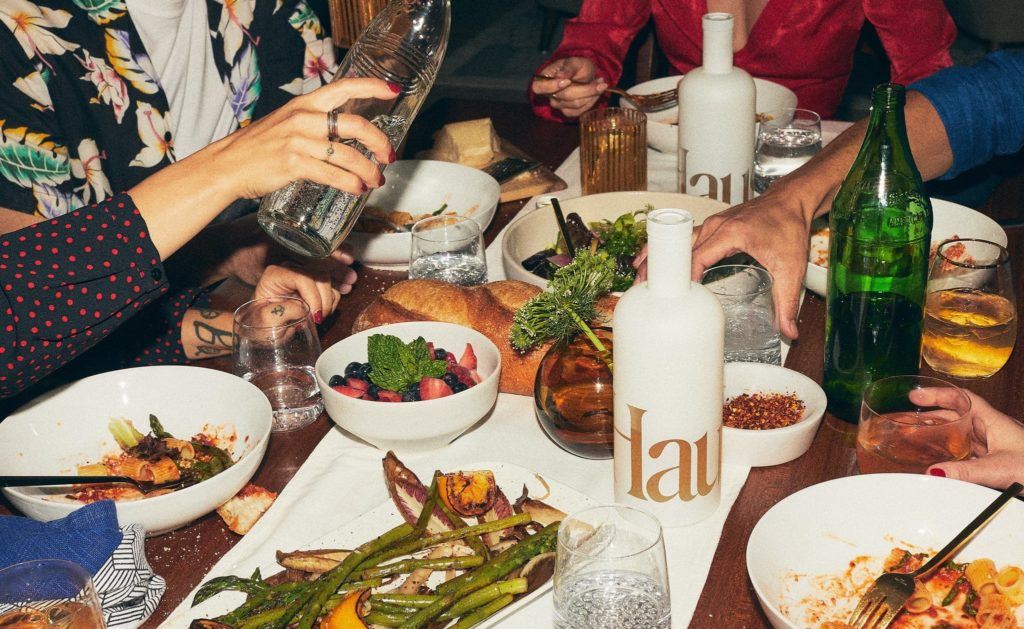Haus Apéritifs: The Restaurant Project

“We wanted the ritual of drinking without the consequences of high sugar, high alcohol liquor — And it turns out millennials want the same thing," said Co-Founder and Co-CEO Helena Price Hambrecht. "Nothing in the market worked for us, so we decided to make a new product that's delicious, yes, but also lets us bring the focus of drinking culture back to how we spend time with the people in our lives.”
Drink Haus!
The last time you were sipping an Aperol Spritz, were you aware that this style of drink is referred to as an ‘apéritif’? If you’re new to the term, it refers to an elegant, refreshing liquor that is often used as a starter or finisher to a meal. The liquor can be sipped straight (on the rocks) or mixed with seltzers and liquors to fashion a cocktail. Apéritifs have been extremely popular as part of cocktail culture in Europe for decades and are beginning to make a comeback in North America from their ‘Mad Men’ era days.
Helena and Woody Hambrecht, the co-founder/CEO duo that just also happen to be married, are leading the comeback of aperitif culture. Helena is a seasoned Silicon Valley veteran, and Woody is a third-generation winemaker. The duo has teamed up to create delicious low alcohol and sugar drinks in a range of flavors (from a old-fashioned style substitute called ‘Bitter Clove’, to an aperol replacement named ‘Citrus Flower’, with even a Moscow-mule style gingery springtime edition flavor) that’s available direct-to-consumer. Haus is the only player selling liquor direct to consumer, a high margins business that is only possible through a loophole in current regulations. Their eye-pleasing, millennial style marketing and passion for simple, organic ingredients, are allowing even alcohol to infiltrate the wellness space. The Hambrecht’s thesis for their business revolved around two points: 1, that more and more drinkers under 40 are looking for more refined drink choices that fit within their healthy lifestyles, and 2, that these beverages are able to reach customers in new ways that completely shake the bureaucratic alcohol distribution system. So far, their bet appears to be working. Market research has shown the sales of aperitifs rose 8% last year, while vodka fell by the same amount.
Helena Price Hambrecht, Co-Founder and Co-CEO of Haus explained that the “European apéritif culture has all of the qualities that today’s generation of American drinkers want – it’s more laid back, it’s about people forming connections instead of partying hard. It’s about drinking something complex and interesting versus drinking just to get drunk. The fact that the Aperol Spritz (from Northern Italy) is the fastest growing drink in America shows just how quickly this style of drinking is catching on.”[1]
The Restaurant Project
Helena and Woody were struck by the owners of some of their favorite restaurants struggling within the bounds of the COVID—19 crisis. In response, they’ve partnered with 9 of some of the most successful restaurants across the country to co-create apéritifs that honor the flavors and vibes of each business. With their inspiration, Woody creates the recipes for each unique flavor and Helena brings these to market quickly, utilizing their existing supply chain and distribution system. The result is 100% of the profits being sent directly to the restaurants to help keep them afloat and pay their employees while social distancing measures continue. While the project is commendable in itself, it also serves as a brilliant marketing tool for both the restaurants and Haus. They do have some personal motivation to help keep the restaurant industry alive – with potential for planned partnerships down the road, this could help to secure Haus on the drink list at many of these establishments.
How it works
Helena and Woody work with restaurants to develop an aperitif that reflects their unique flavor profile. Customers pre-order bottles from the restaurant they’d like to support, or simply buy a discounted bundle of the whole line of nine flavors. All profits from sales go immediately to the restaurant, and customers are shipped their purchases in the following weeks once the products are ready for release. Haus can move swiftly in the e-commerce space because they own their production, supply, and distribution – something that would take significant effort for a single restaurant to start up during this crisis. Haus is able to leverage their existing infrastructure to quickly provide aid to these businesses that need it as soon as possible to keep afloat.
Business Model
Prior to the coronavirus crisis, Haus has successfully been operating in the DTC liquor space – a place with a remarkable amount of white space. The lack of competition provides ample opportunity for Haus to cement its brand and community of loyal followers. Recently, Haus has started to provide an opt-in subscription service where its members have access to member-only new flavors (most recently: Lemon Lavender for spring!), as well as events involving delicious food & drink in various cities around the US. Having the distribution infrastructure in place as an e-commerce business prior to the coronavirus crisis should allow their business to operate as usual, and Haus should stand to benefit from their ability to ship alcohol directly to customer’s doors in a time where the stay-at-home order is in effect.

Opportunities and Challenges
There is a large total addressable market opportunity here for the taking – especially as the sole e-commerce liquor brand to date. The barriers for adoption to Haus are largely centered around consumer education regarding apéritif culture and marketing challenges. Like any DTC brand, it’s challenging to be operating solely online without some sort of brick and mortar presence. Moving into physical locations would remove one of their most competitive advantages: being the only DTC liquor company out there, and with very lucrative margins.
The current lack of competition is the space could change at any time, challenging Haus’ initial domain on the experience. However, the significant regulatory hurdles in the highly regulated alcohol industry will preclude any major incumbents from going after this part of the market due to legal issues. Any new entrants to the space are also more likely to help Haus than hurt it, by bringing further awareness and education to apéritif culture.
Interested in trying Haus?
This blog post and its author are not affiliated in any way with Haus, except by being an early adopter and a huge fan of Woody and Helena’s product. During these challenging times, we could really all use a drink. Try some by ordering from https://drink.haus/!
Sources
https://drink.haus/pages/the-restaurant-project
https://medium.com/@helena/introducing-the-restaurant-project-7c4d5a6d2272
https://techcrunch.com/2020/01/30/haus-raises-4-5-million-to-replace-your-wine-club-membership/
https://thespoon.tech/haus-raises-4-5m-for-direct-to-consumer-apertif-club/
https://www.fastcompany.com/90368380/wants-you-to-ditch-aperol-spritz






Where do you think digital innovation has been most helpful for Haus? My sense would be that a restaurant could get its own ecommerce platform spooled up if it wanted to – especially now that Toast Tab and other platforms are making themselves (freely) available – so perhaps the big value-add is in the supply chain and distribution management…but honestly have no idea.